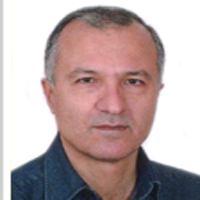Effect of Infrared Drying on Qualitative Characteristics of Sumac Fruit (Rhus coriaria L.)
Drying of medicinal and aromatic plants (MAPs) is a widely spread method offering physico-chemical stabilization by taking away part of the moisture content, producing different products with different qualitative properties and economical value. The main purpose of MAPs drying is to extend product shelf life, minimize packaging requirements and reduce shipping weights. Drying is used to stop the growth of microorganisms and preserve the quality of MAPs. There are different drying methods and their suitability can be determined by energy efficiency, drying time, preservation of active substances and other quality properties of the product, depending on market demand. Therefore, determining a suitable drying method to achieve higher active substances in medicinal plants is very important. Advantages of infrared drying include high efficiency of conversion of electrical energy into heat, a suitable alternative source for thermal energy, and uniform heating of the product surface. The aim of this study was to investigate the effect of infrared drying on drying time and the qualitative characteristics of sumac fruit (total color changes, total phenolic content, organic acids, and vitamin C).
Sumac fruits (from the forests of Sardasht city in West Azerbaijan Province, Iran) were used after complete separation from clusters and additional parts for drying and performing the desired treatments. In this research, an infrared dryer was used to dry the sumac sample which was made by the Department of Biosystems Engineering of Tarbiat Modares University. For this study, a factorial experiment was performed based on a completely randomized design. In this experiments, three levels of radiation intensity (0.2, 0.3 and 0.5 watts per square centimeter) and three levels of air velocity (0.5, 1 and 1.5 meters per second) were used. The sample tray inside the dryer was connected by a rod to a digital scale at the bottom of the dryer. The scale had a computer connection port that could measure and record the weight of the fruits continuously during drying. To determine the initial moisture content, 3 samples (50 g) were placed in an oven at 105 °C and after three hours, the samples were taken out of the oven and weighed, and finally the moisture content of the product was calculated on wet basis. The initial moisture content of sumac fruits was approximately 17%. Drying was continued until the product reached a moisture content of 7%. Drying time and quality characteristics of sumac fruit (color changes, total phenolic content, organic acids, and vitamin C) were measured. Colorimeter (Hunterlab, Color Flex model, USA) was used to check the color changes of sumac fruits during drying and the total color changes ( ) compared to the fresh sample were calculated. To measure the total phenolic content, Folin-Ciocalteu phenol reagent was used by a spectrophotometer (Samsung, Smart Spec Flus model, South Korea). Titration method was used to measure vitamin C and organic acids. Finally, based on all the mentioned parameters, the optimization was performed by Design Expert software (version 10) and the best score was obtained based on the utility index.
The results showed that the intensity of infrared radiation and air velocity had a significant effect on the studied characteristics except total phenolic content. The minimum and maximum drying times were obtained at the highest and lowest infrared intensities and air velocities, respectively. Increasing the infrared intensity and subsequently increasing the temperature had a negative effect on the total color changes, organic acids and vitamin C, so that the least total color changes and the highest amount of organic acids and vitamin C were obtained by reducing the intensity of infrared radiation. The lowest total color change and the highest amount of organic acids were obtained in the treatment of 0.2 W cm-2 × 1.5 m s-1 and the highest amount of vitamin C in 0.2 W cm-2 × 1 m s-1 and 0.3 W cm-2 × 0.5 m s-1 treatments, respectively. The values obtained from the optimization parameters for the studied indicators (drying time, total color changes, organic acids, and vitamin C) showed that the best point for drying of sumac fruit was the infrared radiation intensity of 0.3 W cm-2 and air velocity of 0.5 m s-1. In this treatment, the highest utility index obtained by software was 0.71.
Infrared drying reduced the drying time of sumac fruit compared to traditional drying methods (shade and sun drying). In addition to reducing the drying time, infrared drying was a suitable method for preserving the phytochemical properties and color changes of sumac fruits.
- حق عضویت دریافتی صرف حمایت از نشریات عضو و نگهداری، تکمیل و توسعه مگیران میشود.
- پرداخت حق اشتراک و دانلود مقالات اجازه بازنشر آن در سایر رسانههای چاپی و دیجیتال را به کاربر نمیدهد.



